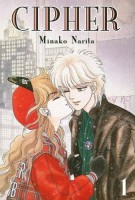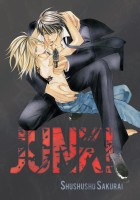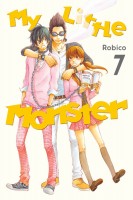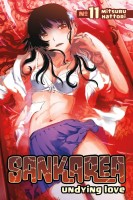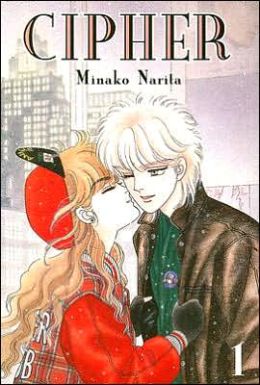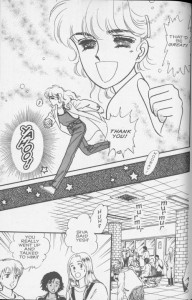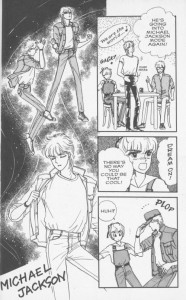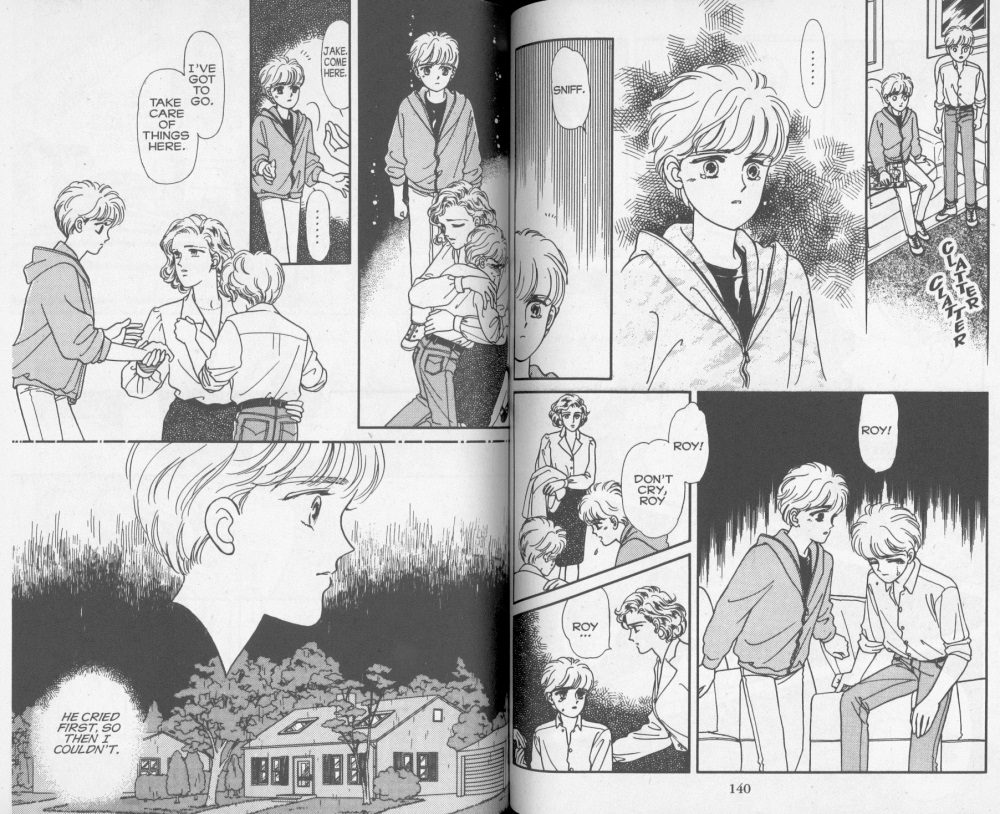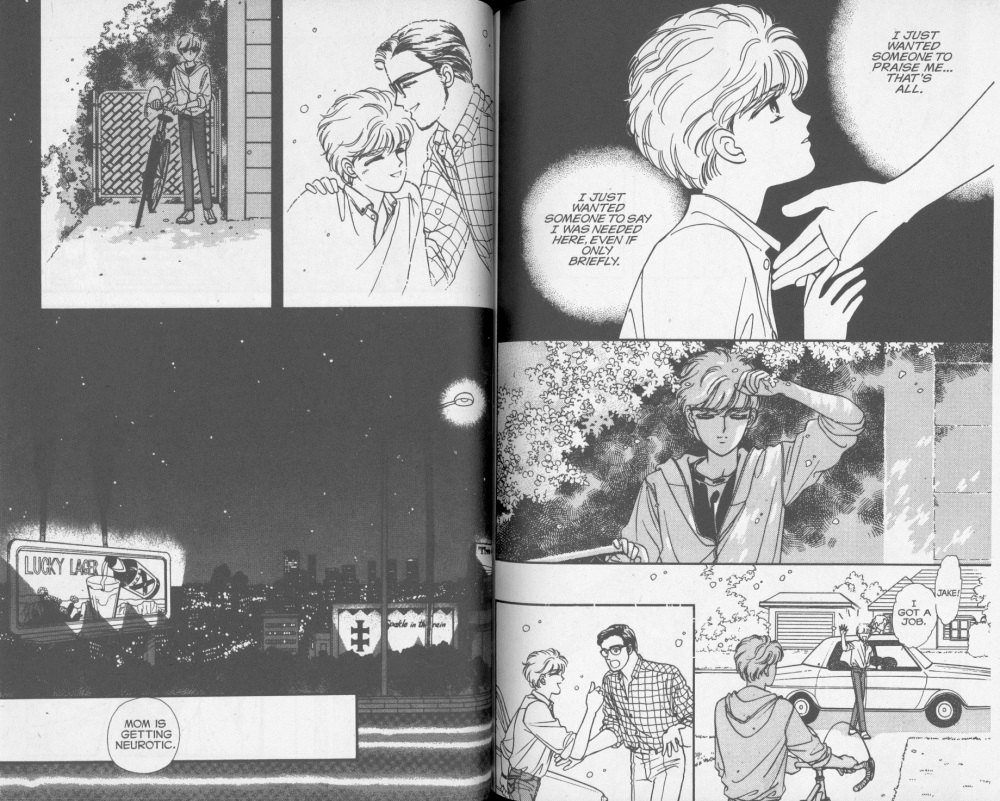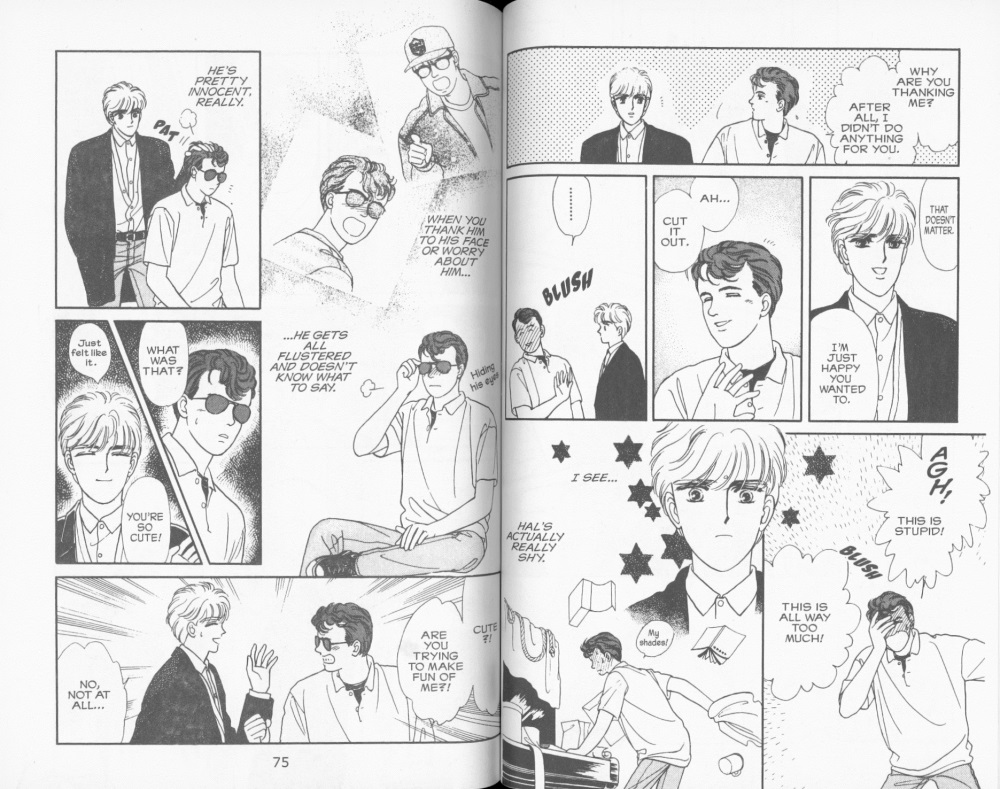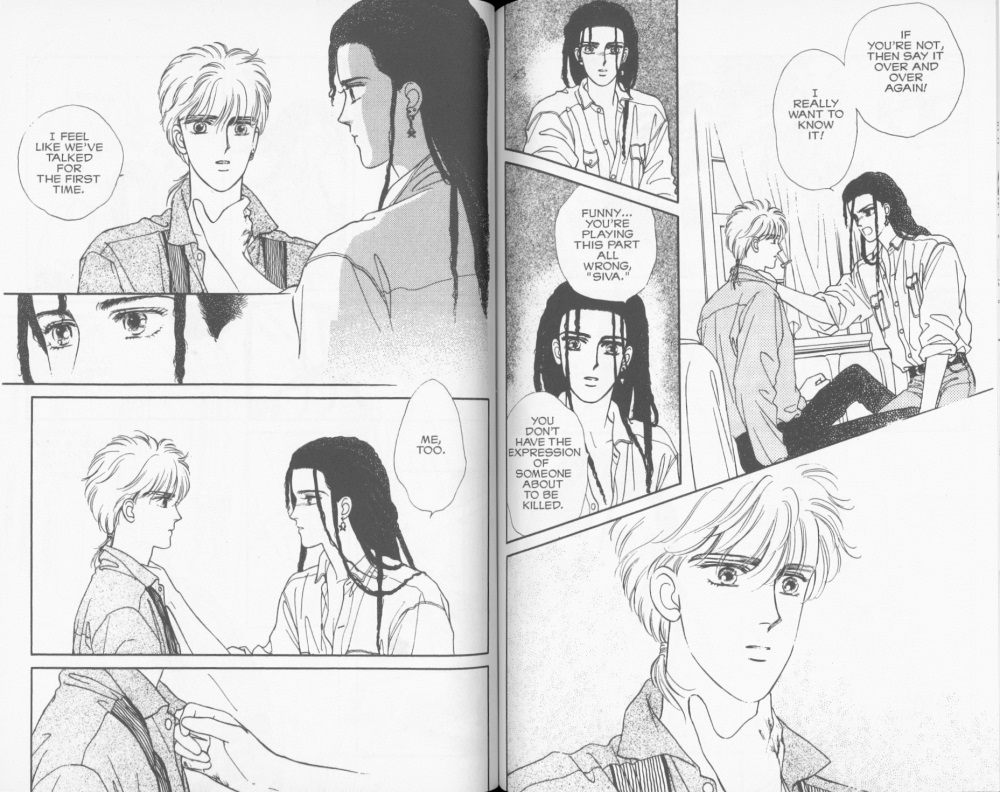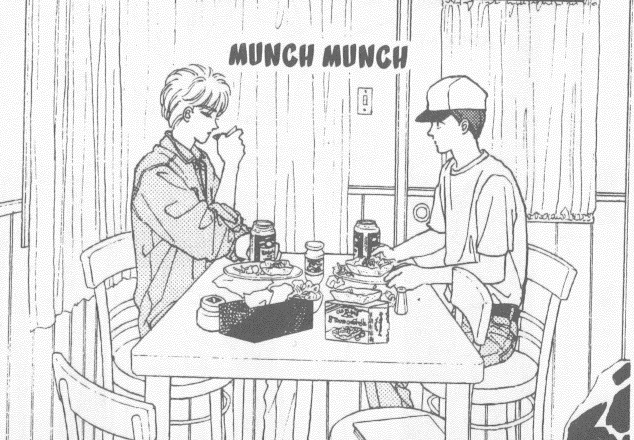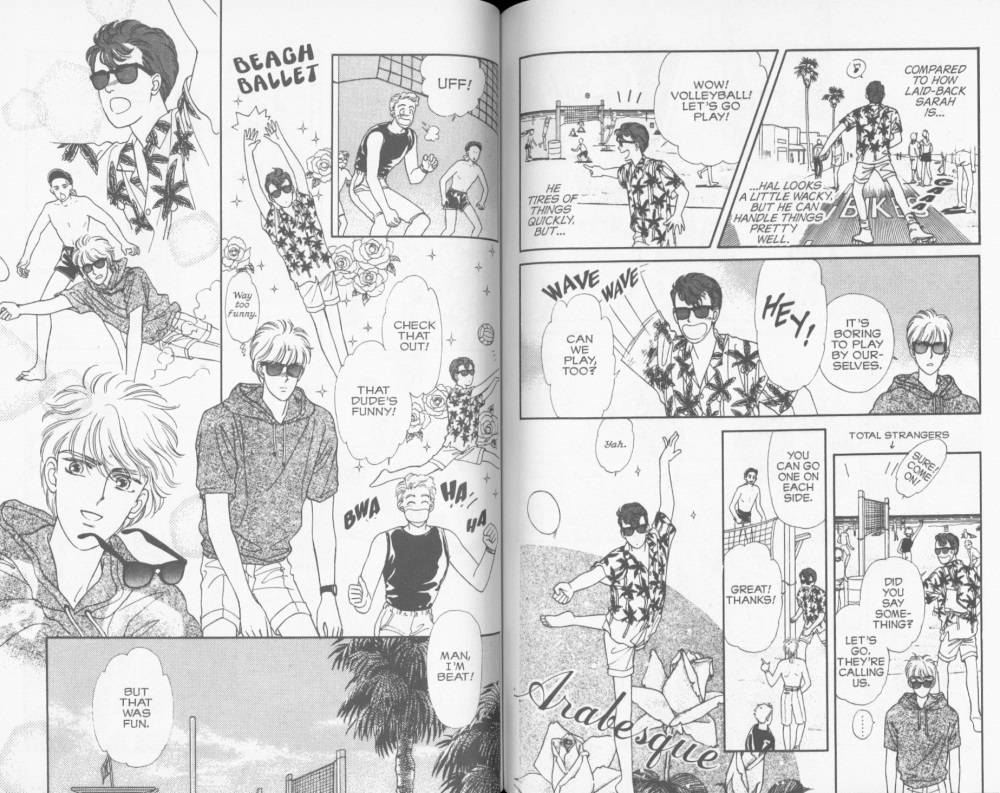My News and Reviews
Last week was the last week of May, which means the most recent giveaway at Experiments in Manga is currently underway. There are still a couple of days left to enter for a chance to win an Ema Toyama Twosome, i.e. the first volume of both Missions of Love and Manga Dogs. I also posted a couple of in-depth reviews last week. The first review was of Yoshikazu Yasuhiko’s Mobile Suit Gundam: The Origin, Volume 8: Operation Odessa, which is the first volume to take place after the series’ extended flashback arc. It’s not my favorite volume in the series, but Kai gets his moment in the spotlight which I was happy to see. The second review was of Kazuki Sakuraba’s award-winning novel Red Girls: The Legend of the Akakuchibas, which I enjoyed immensely. Sakuraba is probably better known as the creator of Gosick, but Red Girls is a fantastic multi-generational epic.
I was actually at a conference for work most of last week, so I wasn’t able to keep up with news and announcements to quite the same extent that I’m usually able to. However, I still did come across some interesting reading. Aya Kanno, for example, has recently had some interviews posted. Over at Barnes & Noble’s Sci-Fi & Fantasy Blog, Brigid Alverson talked with Kanno about defying expectations and Rebecca Silverman’s interview of Kanno was posted at Anime News Network. A couple of weeks ago I reviewed the first volume of Wayward which I quite enjoyed, so I found Katriel Page’s essay about how Rori embodies liminality to be particularly interesting. And over at Organization Anti-Social Geniuses, Justin wants you all to Meet the Man Who’s Translated a Thousand Manga Chapters—Dan Luffey.
Quick Takes
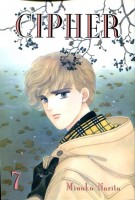 Cipher, Volumes 7-11 by Minako Narita. Despite being twelve volumes in Japan, for some reason the English-language edition of Cipher was collected in eleven. (It is the complete series, though.) I thoroughly enjoyed the first part of the series, and the sixth volume ends with a fairly dramatic twist, so I was anxious to read the manga’s conclusion. Cipher and Siva, being nearly inseparable growing up and at one point even sharing an identity, are now living apart with the entire country between them. Wracked with guilt, Cipher has moved from New York to Los Angeles, leaving his girlfriend Anise behind along with his twin brother. In general, this second half of Cipher tends to be somewhat more believable than the first, though there are still plenty of parts that aren’t especially realistic. However, Narita does an excellent job of exploring the emotional fallout and the changes in the characters’ relationships with one another that come about as a result of both Cipher and Siva learning to live their lives as individuals and each becoming his own person. New characters are introduced who play a very important role in this evolution, including Cipher’s Los Angeles roommate Hal and Siva’s fellow model Alex. In the end, Anise’s story ends up being secondary to that of the brothers, but she shows growth and development as well.
Cipher, Volumes 7-11 by Minako Narita. Despite being twelve volumes in Japan, for some reason the English-language edition of Cipher was collected in eleven. (It is the complete series, though.) I thoroughly enjoyed the first part of the series, and the sixth volume ends with a fairly dramatic twist, so I was anxious to read the manga’s conclusion. Cipher and Siva, being nearly inseparable growing up and at one point even sharing an identity, are now living apart with the entire country between them. Wracked with guilt, Cipher has moved from New York to Los Angeles, leaving his girlfriend Anise behind along with his twin brother. In general, this second half of Cipher tends to be somewhat more believable than the first, though there are still plenty of parts that aren’t especially realistic. However, Narita does an excellent job of exploring the emotional fallout and the changes in the characters’ relationships with one another that come about as a result of both Cipher and Siva learning to live their lives as individuals and each becoming his own person. New characters are introduced who play a very important role in this evolution, including Cipher’s Los Angeles roommate Hal and Siva’s fellow model Alex. In the end, Anise’s story ends up being secondary to that of the brothers, but she shows growth and development as well.
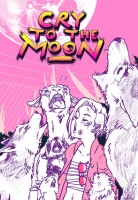 Cry to the Moon by Various. I discovered Love Love Hill relatively recently, but the collective releases some great comics, so I’ve been making a point to pick up its anthologies. Cry to the Moon, based on the theme of delinquents and animals, is the most recent Love Love Hill comics anthology. The volume includes contributions from eight different creators. I was especially looking forward to Saicoink’s “To My Dear White Dove: A Quiet Love,” a sort of alternate universe side story to her series Open Spaces and Closed Places (which I absolutely love), but I enjoyed the other works that were collected as well. Cry to the Moon has a nice variety of comics that range from the comedic to the bittersweet to the tragic. Many of the stories are based in reality while a few of them incorporate more fantastical elements. Some are only a few pages while others are more lengthy and involved. But no matter the length or the tone of the story, each of the comics collected in Cry to the Moon exhibits heart. What I love about anthologies is the opportunity to experience the different art styles and storytelling techniques of the creators involved. I also appreciate that the individual creators are given space in Cry to the Moon to write about their influences and inspirations for their stories and how they decided to interpret the anthology’s theme.
Cry to the Moon by Various. I discovered Love Love Hill relatively recently, but the collective releases some great comics, so I’ve been making a point to pick up its anthologies. Cry to the Moon, based on the theme of delinquents and animals, is the most recent Love Love Hill comics anthology. The volume includes contributions from eight different creators. I was especially looking forward to Saicoink’s “To My Dear White Dove: A Quiet Love,” a sort of alternate universe side story to her series Open Spaces and Closed Places (which I absolutely love), but I enjoyed the other works that were collected as well. Cry to the Moon has a nice variety of comics that range from the comedic to the bittersweet to the tragic. Many of the stories are based in reality while a few of them incorporate more fantastical elements. Some are only a few pages while others are more lengthy and involved. But no matter the length or the tone of the story, each of the comics collected in Cry to the Moon exhibits heart. What I love about anthologies is the opportunity to experience the different art styles and storytelling techniques of the creators involved. I also appreciate that the individual creators are given space in Cry to the Moon to write about their influences and inspirations for their stories and how they decided to interpret the anthology’s theme.
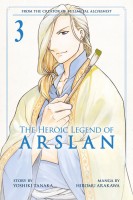 The Heroic Legend of Arslan, Volume 3 by Hiromu Arakawa. I am largely enjoying The Heroic Legend of Arslan, it’s a great fantasy story with exciting battles and interesting worldbuilding, but I do wish that the characters and plot had a little more complexity and nuance to them. By the end of the third volume, I have some hope that this will eventually happen as the series continues to develop, but right now it’s just not quite there. Characterization in the manga tends to be painted with a fairly broad stroke and heavy hand. Some of the humor, while amusing, doesn’t always mesh well with the overall tone of the series, either. However, there are other things that The Heroic Legend of Arslan is doing well. I particularly like the series’ approach to action scenes and battles. There are plenty of examples of extraordinarily strong fighters showing off their incredibly powerful skills, but strategy and tactics are also incredibly important to how a battle plays out in the end. In the third volume, Arslan and his small contingent of supporters face off against more than a thousand soldiers, but thanks to careful planning, psychological manipulation, and effective use of the geographical terrain, for the most part they are able to come through unscathed.
The Heroic Legend of Arslan, Volume 3 by Hiromu Arakawa. I am largely enjoying The Heroic Legend of Arslan, it’s a great fantasy story with exciting battles and interesting worldbuilding, but I do wish that the characters and plot had a little more complexity and nuance to them. By the end of the third volume, I have some hope that this will eventually happen as the series continues to develop, but right now it’s just not quite there. Characterization in the manga tends to be painted with a fairly broad stroke and heavy hand. Some of the humor, while amusing, doesn’t always mesh well with the overall tone of the series, either. However, there are other things that The Heroic Legend of Arslan is doing well. I particularly like the series’ approach to action scenes and battles. There are plenty of examples of extraordinarily strong fighters showing off their incredibly powerful skills, but strategy and tactics are also incredibly important to how a battle plays out in the end. In the third volume, Arslan and his small contingent of supporters face off against more than a thousand soldiers, but thanks to careful planning, psychological manipulation, and effective use of the geographical terrain, for the most part they are able to come through unscathed.
 Showa: A History of Japan, 1944-1953 by Shigeru Mizuki. This third and penultimate volume of Showa: A History of Japan addresses the time period of that era that I already knew the most about—the end of the Pacific War and the following occupation of Japan by Western forces. Even so, there were things that I learned reading the manga that I never knew before. Showa: A History of Japan continues to be told using two closely intertwined narratives. Mizuki outlines the larger developments of the war and Japan’s reconstruction, but he also incorporates the story of his own experiences and the experiences of his family. It’s this personal touch that makes Showa: A History of Japan especially compelling and hard-hitting as it drives home the tragedy of war and the dire circumstances faced by the soldiers and civilians on both sides of the conflict. Part of the third volume deals with some of the same events found in Mizuki’s Onward Towards Our Noble Deaths, so I was already familiar with some of the story, but that didn’t make its impact any less effective. This volume reveals how Mizuki survived during war against all odds as well as how he survived after the war (another difficult feat), including his beginnings as a kamishibai and manga artist.
Showa: A History of Japan, 1944-1953 by Shigeru Mizuki. This third and penultimate volume of Showa: A History of Japan addresses the time period of that era that I already knew the most about—the end of the Pacific War and the following occupation of Japan by Western forces. Even so, there were things that I learned reading the manga that I never knew before. Showa: A History of Japan continues to be told using two closely intertwined narratives. Mizuki outlines the larger developments of the war and Japan’s reconstruction, but he also incorporates the story of his own experiences and the experiences of his family. It’s this personal touch that makes Showa: A History of Japan especially compelling and hard-hitting as it drives home the tragedy of war and the dire circumstances faced by the soldiers and civilians on both sides of the conflict. Part of the third volume deals with some of the same events found in Mizuki’s Onward Towards Our Noble Deaths, so I was already familiar with some of the story, but that didn’t make its impact any less effective. This volume reveals how Mizuki survived during war against all odds as well as how he survived after the war (another difficult feat), including his beginnings as a kamishibai and manga artist.
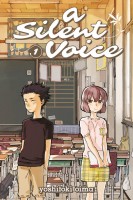 A Silent Voice, Volume 1 by Yoshitoki Oima. If the volumes that follow the first are anywhere near as strong, A Silent Voice is likely one of the best series to be released this year. (At least in print; technically, the manga started being officially released digitally on Crunchyroll last year.) The first volume of A Silent Voice is both powerful and heartbreaking. The story follows Shoya, a somewhat unlikeable young man and a terrible bully. He learns that his actions have consequences not only for others but for himself as well when he decides to make Shoko, a deaf transfer student, his next target. A Silent Voice doesn’t sugarcoat school bullying, showing just how vicious and cruel kids can be and how quickly they can turn on one another. Perhaps even more tragic is that some of the teachers do very little to put an end to it or to discourage the behavior. In some cases, they seem to even encourage it, or at least allow the bullying to flourish. There is a stunning lack of empathy from almost every character in the series. The majority of A Silent Voice, Volume 1 takes place during Shoya and Shoko’s middle school years. This actually occurs six years before the start of the manga, establishing the complicated nature of Shoya’s feelings toward Shoko and the exploring developments that led him to become the person he now is.
A Silent Voice, Volume 1 by Yoshitoki Oima. If the volumes that follow the first are anywhere near as strong, A Silent Voice is likely one of the best series to be released this year. (At least in print; technically, the manga started being officially released digitally on Crunchyroll last year.) The first volume of A Silent Voice is both powerful and heartbreaking. The story follows Shoya, a somewhat unlikeable young man and a terrible bully. He learns that his actions have consequences not only for others but for himself as well when he decides to make Shoko, a deaf transfer student, his next target. A Silent Voice doesn’t sugarcoat school bullying, showing just how vicious and cruel kids can be and how quickly they can turn on one another. Perhaps even more tragic is that some of the teachers do very little to put an end to it or to discourage the behavior. In some cases, they seem to even encourage it, or at least allow the bullying to flourish. There is a stunning lack of empathy from almost every character in the series. The majority of A Silent Voice, Volume 1 takes place during Shoya and Shoko’s middle school years. This actually occurs six years before the start of the manga, establishing the complicated nature of Shoya’s feelings toward Shoko and the exploring developments that led him to become the person he now is.
